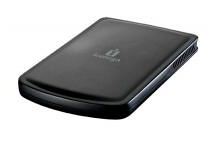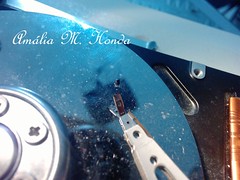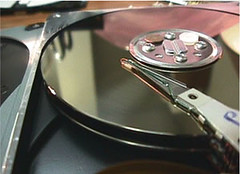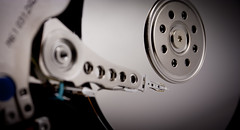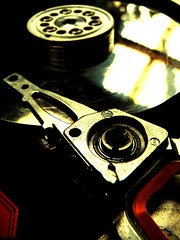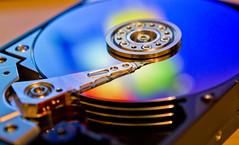When you're shopping around for an IP-based video surveillance system, you will need to be particularly cautious about what exactly you're looking at and what the individual terms mean. How IP-based video surveillance works is open to interpretation as far as some video surveillance and security salespeople are concerned -- not because they are trying to confuse the issues, but because there is no genuine consensus on what the term "IP-based" or related ones such as "networked" or "web-based" means.

Originally video surveillance was done based on analog technology -- closed
circuit television (CCTV) and recording on video tapes. This was fine for
recording what was going on, but it didn't broadcast actual live information, so
it wasn't practical for monitoring stores, for instance, from a remote location.
It simply provided what happened after the fact. The picture quality wasn't
great and it relied on human reliability as well -- someone had to remember to
change the tapes regularly, etc.
Hard Disk External
Digital revolutionizes video surveillance
How IP-based Video Surveillance Works -- Way Beyond Analog
With the Internet revolution and the ever-increasing presence of Local Area
Networks, technology took great strides in video surveillance in the 1990's.
Analog camera tubes were replaced with CCD (Charged Coupled Devices) and digital
cameras became affordable for most people.
This combination meant that video surveillance could do two things: go live
over the Internet or a closed network for surveillance and provide clearer,
crisper images that could be tracked and manipulated easily. For law
enforcement, digital surveillance meant it was much easier to zoom in on images,
track particular scenes and enhance features.
The basics of IP-based surveillance
A digital camera "views" the scene in front of it, broadcasts the video
images as a digitized signal over a LAN line (Local Area Network) where it's
then transmitted to a computer or server. The server in turn manages all of this
information. Depending upon the software used to manage the digital images, it
can record, display or retransmit the images to anywhere in the world.
The software package can easily be upgraded to allow for analyzing data,
selecting specific "flagged" items to watch for and a host of other functions,
making it a truly customizable security tool.
True IP-based digital surveillance uses CCD cameras that use signal
processing that send packetized video streams over the LAN through a Cat 5 cable
rather than a coax cable network, utilizing greater bandwidth and standard
TCP/IP communication.
It also provides more intelligent data mining and information retrieval. If
security is an issue, full digital surveillance also offers the added advantage
of data encryption opportunities to protect against image tampering -- something
not possible with analog recording.
Recently, a few companies such as D-Link and Linksys have also developed fully
digital cameras that actually have completely integrated, built-in web servers
so that no external computers are needed for operating them. The signal is
transmitted directly to the terminal location for storage or play-back.
Halfway there...
The "middle of the road" of video surveillance is upgrading video
surveillance by utilizing a Digital Video Recorder (DVR). A DVR system is not
really fully IP-based, but is step toward the more advanced IP technology. In
actuality, a DVR system uses the same camera and structures for cabling as the
older CCTV analog systems, but the old VCRs have been replaced with DVR for
storage of the data. The data is converted to digital so that it can be stored
on hard disks, but the quality of the images captured remains analog since this
is how it originated.
When shopping for a system, be sure to ask if the system is digital based on
the recording (DVR) or on the camera, since many manufacturers consider a system
digital by virtue of the DVR storage system even if the camera recording the
images is still analog.
Going all the way
Some people will move to the hybrid models of a CCTV/DVR system when they
first move beyond an analog system because it seems like the next practical
evolutionary step in video surveillance. However, shifting to this method
largely ignores how IP-based video surveillance works.
With CCTV/DVR surveillance you have actually simply delayed the inevitable by
adding on a relatively new technology (hard disk, digital storage) to an old
technology (analog video over coaxial transmission lines). Rather than moving
forward into something new, you have prolonged the demise of the old.
Advantages of IP-based video surveillance
The leap into completely IP-based technology is the best bang for your buck
both monetarily and in terms of security by far. Digital surveillance can be
done over a LAN network, of course, but TCP/IP transmittal of surveillance makes
sense for remote monitoring of multiple locations and for remote recording of
data onto back-up servers and hard disks for long-term storage.
With IP-based video surveillance, you can connect your surveillance camera or
cameras to any network or wireless adapter, and you are extremely flexible in
your placement of the camera itself. A typical PC-attached video camera, while
providing digital picture image quality, still has to be within approximately
ten feet of the computer itself.
Set-up of an IP-based video system is easy -- once you've set up an IP
address, you're up and running and it's extremely stable and reliable. Because
this is the technology of the future, it is also upgradeable. You won't be
outgrowing an IP-based video surveillance system any time soon because new
developments are based on improving this market. Therefore, you will be able to
add on and improve this system for years to come while older, CCTV+DVR hybrids
will dead-end and become obsolete.
Comparing analog and IP-based video surveillance
A better way to understand the differences between analog and IP-based video
surveillance may be to compare the two and how they work:
Analog or CCTV+DVR video surveillance
o Easy to use -- operates like a VCR
o Changing cassettes and rewinding regularly means human error frequently interferes with effectiveness
o Image quality is poor
o Storage tapes wear out over time
o Broadcasting images live isn't practical
o Storage is bulky
o Uses analog recording, recording in low-grade picture quality and inability to search and track easily
o Adding DVR systems must be done in 'blocks' of 16 channels
IP-based video surveillance
o IP-based recording means instant transmittal of images anywhere in the world
o Can monitor multiple cameras from one remote location
o No decrease in recording quality over time or with repeated replays
o Digital picture quality far superior to analog
o IP-base recording is highly compressed for easier storage and can be transported over a variety of media
o Digital images can be encrypted for security purposes
o Updates and add-ons are relatively inexpensive through software packages and Internet computer networking
o Adjustable frame rates
o Remote or shared viewing may be done over the Internet or a wireless connection
o Standard IP video compression techniques are used
o IP surveillance cameras may be added individually or in groups according to your needs
If you are contemplating increased or upgrading video surveillance for your
company or home, understanding how IP-based video surveillance works will make
your decision easier. It is the future of video surveillance and, although in
the short term may be a bit more expensive, is obviously an investment in
superior quality and flexibility.
This article on "How IP-based Video Surveillance Works" reprinted with
permission.
Copyright © 2004-2005 Evaluseek Publishing.
Hard Disk External
